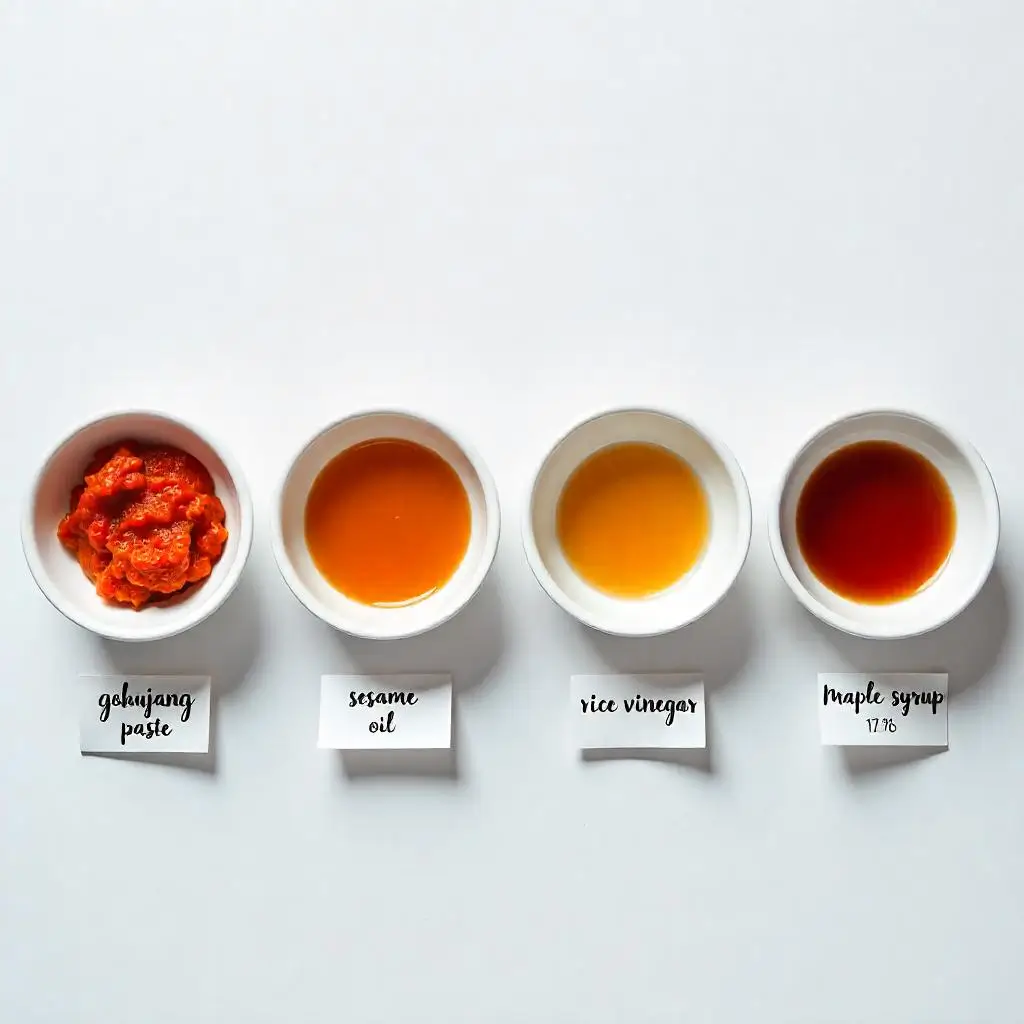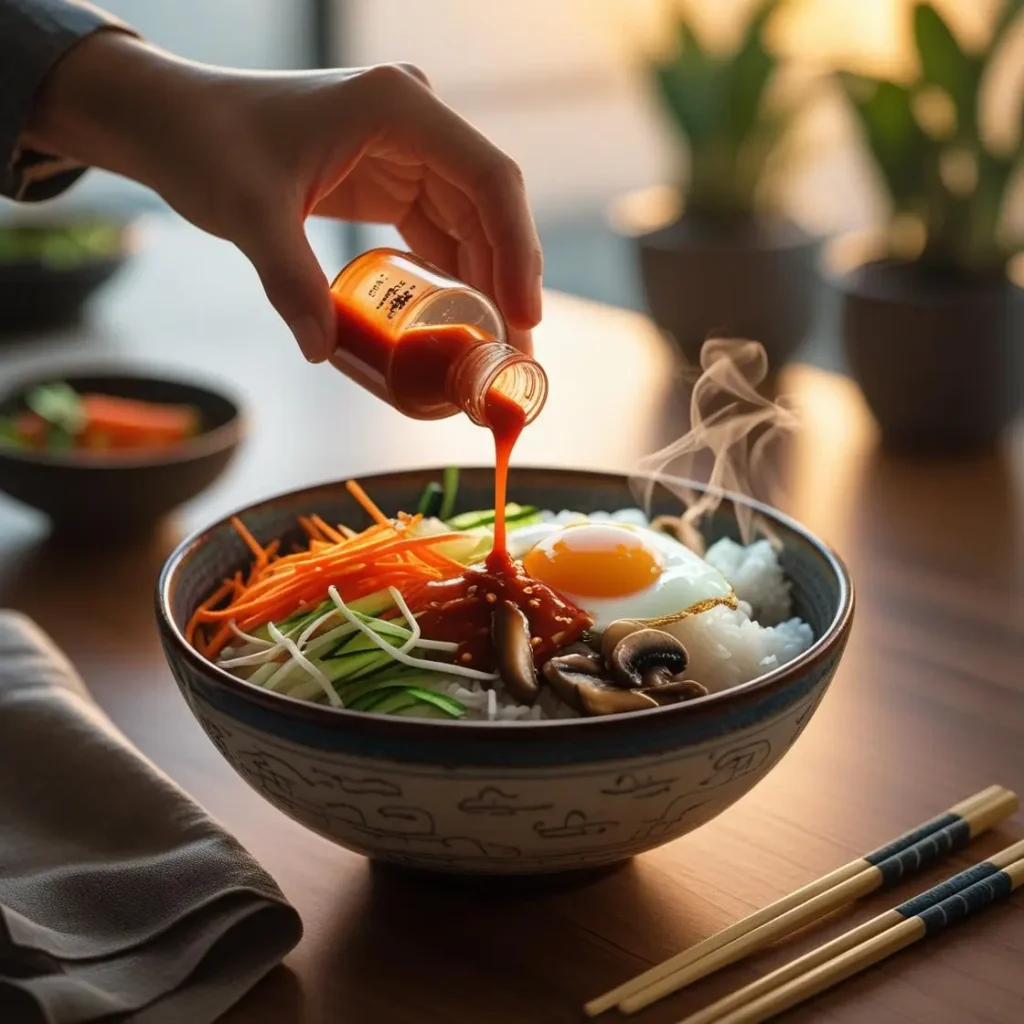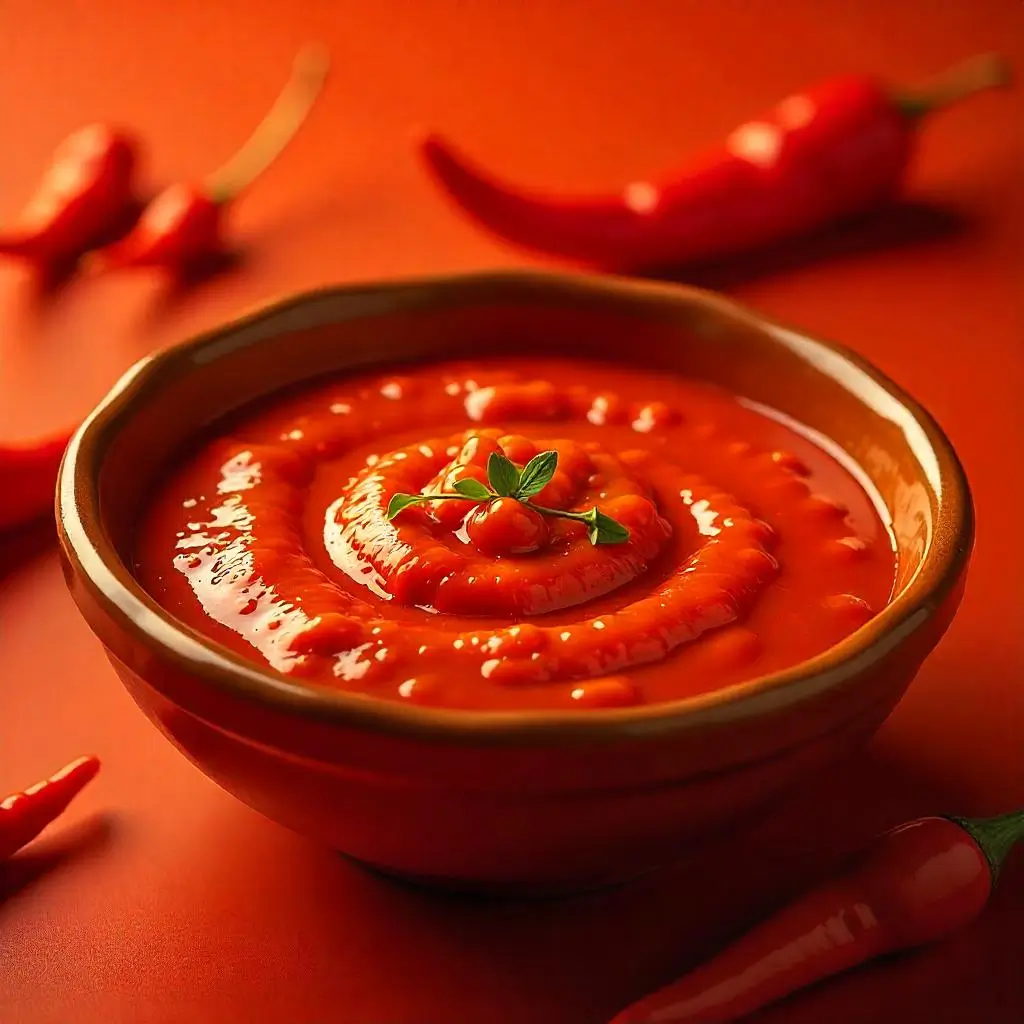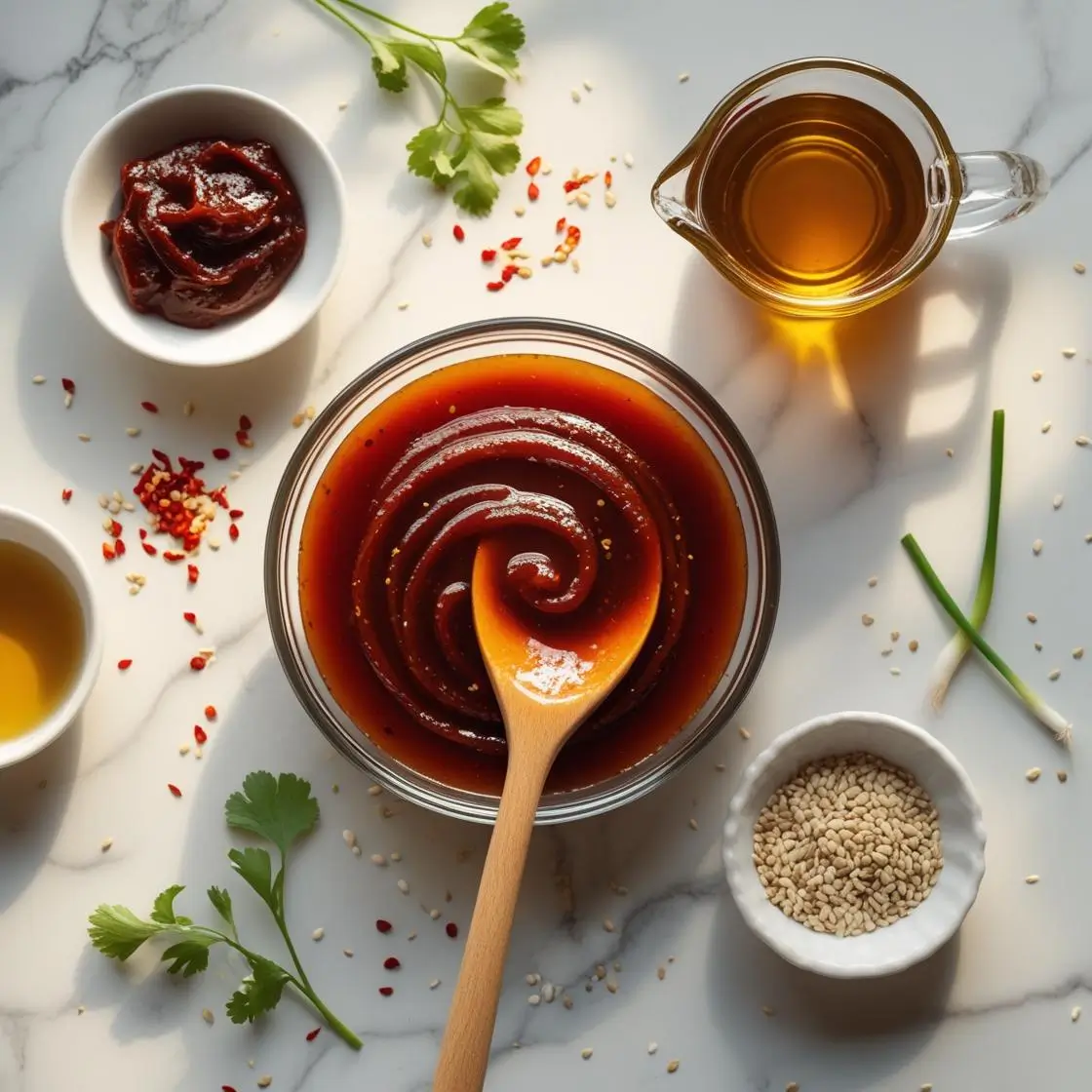Have you ever wondered how to elevate your everyday meals with just one simple condiment? Furthermore, what if I told you that this magical sauce takes only five minutes to make and uses just four ingredients? Today, we’re diving deep into the world of homemade Gochujang sauce – a Korean-inspired condiment that will revolutionize your cooking experience.
Table of Content
- What Makes Gochujang Sauce So Special?
- Understanding the Foundation: What is Gochujang?
- The Four Essential Ingredients
- Simple Preparation Method
- Versatile Applications for Every Meal
- Storage and Shelf Life
- Why Make Your Own Gochujang Sauce?
- Nutritional Information (per serving)
- More Sauce Recipes
- Recipe Card
What Makes Gochujang Sauce So Special?

First and foremost, let’s understand what sets this sauce apart from other condiments. Gochujang sauce delivers a unique flavor profile that perfectly balances sweet, spicy, and umami notes. Moreover, this versatile sauce originated from traditional Korean cuisine but has seamlessly integrated into modern kitchens worldwide.
Initially, many home cooks discover gochujang sauce through bibimbap – Korea’s famous mixed rice bowl. However, once you experience its complex flavors, you’ll quickly realize this sauce deserves a permanent spot in your refrigerator. Additionally, its smooth, pourable consistency makes it incredibly easy to incorporate into various dishes.
The beauty of gochujang sauce lies in its ability to transform ordinary meals into extraordinary culinary experiences. Consequently, food enthusiasts often describe it as having a « bold sweet-spicy-umami flavor with a funky base » that adds depth to everything it touches.
Understanding the Foundation: What is Gochujang?
Before we dive into the sauce recipe, it’s essential to understand the base ingredient. Gochujang is a fermented Korean chili paste made from glutinous rice, fermented soybeans, red pepper flakes, and salt. Furthermore, this traditional paste has been a cornerstone of Korean cooking for centuries.
The original gochujang paste is quite assertive and delivers intense flavor on its own. Nevertheless, while the paste is fantastic, it can be challenging to work with due to its thick consistency. Therefore, transforming it into a smooth, pourable sauce makes it much more versatile for everyday cooking.
Interestingly, the fermentation process gives gochujang its distinctive funky undertones that set it apart from other hot sauces. Additionally, this fermentation creates beneficial probiotics, making it not just delicious but also nutritious.
The Four Essential Ingredients
Gochujang Paste: The Star of the Show
The foundation of our sauce starts with quality gochujang paste. Therefore, I recommend sourcing authentic Korean gochujang from Asian markets or well-stocked supermarkets. Brands like « Mother in Law’s Gochujang » offer excellent quality and consistent heat levels.
However, keep in mind that different brands vary significantly in spiciness. Consequently, start with less paste and gradually increase until you achieve your desired heat level. Additionally, authentic gochujang will have a deeper, more complex flavor than mass-produced alternatives.
Sesame Oil: The Game Changer
Next, toasted sesame oil plays a crucial role in balancing the sauce’s intensity. Not only does it reduce the heat level, but it also adds a rich, nutty complexity that complements the fermented flavors beautifully. Furthermore, the oil helps create the smooth consistency that makes this sauce so versatile.
Always choose toasted sesame oil over regular sesame oil, as the toasting process develops deeper flavors that enhance the overall taste profile. Additionally, a little sesame oil goes a long way, so don’t overuse it.
Rice Vinegar: The Bright Note
Rice vinegar provides the essential acidity that brightens the entire sauce. Moreover, this mild vinegar doesn’t overpower the other flavors while adding the perfect tangy note. Consequently, it helps balance the sweetness and heat, creating a well-rounded condiment.
The acidity also helps preserve the sauce naturally, extending its refrigerator life. Furthermore, rice vinegar’s subtle flavor profile makes it superior to other vinegars for this particular recipe.
Pure Maple Syrup: The Natural Sweetener
Finally, pure maple syrup serves as our natural sweetener, creating that coveted sweet-savory balance. Unlike artificial sweeteners or corn syrup, maple syrup adds complexity while maintaining the sauce’s clean ingredient list. Additionally, it provides a subtle caramel note that enhances the fermented flavors.
For non-vegan versions, honey works equally well as a substitute. However, maple syrup’s consistency blends more smoothly, creating a better texture overall.

Simple Preparation Method
Creating this sauce couldn’t be easier. Simply combine all four ingredients in a small bowl and whisk until completely smooth. The entire process takes less than five minutes from start to finish.
However, here’s where customization becomes important. Start with smaller amounts of gochujang paste if you prefer milder heat, or increase it for more intensity. Similarly, adjust the maple syrup quantity based on your sweetness preference.
Once mixed, taste and adjust seasonings as needed. The sauce can be used immediately or stored in an airtight container in the refrigerator for up to one week.
Versatile Applications for Every Meal
Traditional Korean Dishes
Naturally, gochujang sauce shines in traditional Korean applications. Bibimbap becomes infinitely more delicious when drizzled with this homemade sauce. Additionally, it works wonderfully in Korean-inspired rice bowls and stir-fries.
Modern Fusion Applications
However, don’t limit yourself to traditional uses. This sauce excels as a dipping sauce for sweet potato fries, roasted vegetables, and grilled meats. Furthermore, it makes an excellent spread for veggie burgers and sandwiches.
Moreover, try incorporating it into quick weeknight stir-fries or drizzling it over avocado toast for an unexpected flavor boost. The possibilities are truly endless.
Creative Cooking Ideas
Additionally, consider using gochujang sauce as a marinade base for proteins or vegetables. It also works beautifully mixed into mayonnaise for spicy aioli or stirred into noodle dishes for added depth.
Furthermore, adventurous cooks often use it as a pizza sauce alternative or mix it into salad dressings for an Asian-inspired twist.

Storage and Shelf Life
Proper storage ensures your sauce maintains its quality and flavor. Always use clean utensils when handling the sauce to prevent contamination. Additionally, store it in an airtight container in the refrigerator to maximize freshness.
The sauce typically stays fresh for up to one week when properly stored. However, always check for any signs of spoilage before using, especially if it’s been stored for several days.
Why Make Your Own Gochujang Sauce?
You might wonder why you should make your own sauce instead of buying it pre-made. First, homemade gochujang sauce allows you to control the heat level and sweetness to match your preferences. Moreover, commercial versions often contain high fructose corn syrup and preservatives that many home cooks prefer to avoid.
Furthermore, creating your own sauce is incredibly cost-effective. A single batch uses minimal ingredients yet yields enough sauce to last a week. Additionally, the process is so simple that even novice cooks can master it on their first attempt.
Most importantly, homemade gochujang sauce maintains all the complex flavors of the original paste while achieving a smoother, more user-friendly consistency. Consequently, you get the best of both worlds – authentic Korean flavors in a format that’s perfect for drizzling, dipping, and mixing.

Nutritional Information (per serving)
- Calories: 65
- Fat: 5g
- Carbohydrates: 4g
- Protein: 1g
- Sodium: 280mg
- Sugar: 3g
Nutritional values are approximate and may vary based on specific brands used
More Sauce Recipes
- Nacho Cheese
- Wingstop Ranch
- Creamy Béchamel Sauce
- Cowboy Butter
- Rotel Dip
- BLT Dip
- Sauce vierge
- Pesto sauce
- Tomato Sauce

In conclusion, homemade gochujang sauce represents the perfect intersection of simplicity and sophistication. With just four ingredients and five minutes of your time, you can create a condiment that will transform your everyday meals into exciting culinary adventures.
Whether you’re a seasoned cook or just beginning your culinary journey, this sauce deserves a place in your cooking repertoire. So why not give it a try today? Your taste buds will thank you, and you’ll wonder how you ever cooked without it.
Recipe Card

The Ultimate Gochujang Sauce Recipe: Transform Your Kitchen Game
Description
This homemade Gochujang Sauce transforms traditional Korean chili paste into a smooth, pourable condiment with the perfect balance of sweet, spicy, and umami flavors. Ready in just 5 minutes with only 4 simple ingredients!
Ingredients
Instructions
- Combine ingredients: Add gochujang paste, sesame oil, rice vinegar, and maple syrup to a small mixing bowl.
- Whisk thoroughly: Whisk all ingredients together until completely smooth and well combined, about 1-2 minutes.
- Taste and adjust: Sample the sauce and adjust ingredients to preference:
- For milder heat: reduce gochujang paste
- For more heat: add more gochujang paste
- For sweeter: add more maple syrup
- For tangier: add more rice vinegar
- Serve or store: Use immediately or transfer to an airtight container and refrigerate for up to 1 week.
Notes
- Gochujang brands vary in heat level – start with less and add more as needed
Brand recommendation: Mother in Law’s Gochujang offers consistent quality
Oil substitute: Use regular sesame oil if toasted isn’t available, but flavor will be milder
Sweetener options: Honey works well for non-vegans; agave for vegan alternative
Storage tip: Always use clean utensils to prevent contamination

